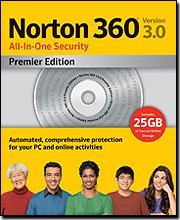Laser Cutting Machine Fundamentals
Laser cutters work by focusing a stream of light made of photons, or laser, on a pinpointed site on an object in order to slice through it rather than using a solid object, like a blade, to cut the object. A computer system with vector graphical software is also necessary. Commands are given to the laser cutter via the software which translates design geometry to numerical CNC machine code. A laser can also take input from drawings developed with the aid of computer-aided design (CAD) software.
Laser Cutting Machine Configurations
The configurations of the machine are characterized based on the way the laser beam will come in contact with the material that will be cut. There are three main setups that work on the X and Y axes. The first configuration is referred to as moving material. In this setup, the object that will be sliced is placed below the cutter head. The next setup is the hybrid laser. Both the table and the cutter head move in opposite axes, offering optimal stability of the beam’s path. The third configuration is referred to as the flying optic configuration, used by Maloya, where the cutting head is the piece of the machine that is in motion. The object being cut is static and this type of configuration produces very clean work. Its speed is also the quickest among the three setups. The flying optic system helps in work flow speed since clamping of the material being cut is not necessary. Some machines use six axes.
Work flow with Laser Cutting Technology
Loading and unloading machines are factors to consider in the work flow environment and take time but the speed of laser cutting should make up for this time. The unnecessary need for material clamping can also save time. Another consideration is if the laser cutter can be left on. Workers may have to turn the machine off to take materials out of the machine and interrupt the flow of cutting.
Lighting is another consideration in a manufacturing environment. Light emitting diode (LED) lighting is coming onto the scene for work areas to save on energy. More green ways of lighting these types of environments are possibilities such as using motion sensors so lights are not used when no one is working.
Laser Cutting Equipment and Maintenance
With the money spent on laser cutting machines, proper maintenance can ensure that they operate optimally and safely. If the machine is not running optimally, bad cuts can be made. Process control such as inspecting cutting nozzles, lenses and additional optics should be conducted regularly. Simply making regular checks on their alignment can save many headaches later. Sources of air can affect focal lenses of the laser cutter. Lens clarity is extremely important. Operators can look at a focal lens and tell if it is dirty as well as by checking it with a polarize. Another option is to replace a lens or clean it with fine tissue and alcohol. Laser optical components are considered consumables. Maintenance of chiller units is also important. They should be run prior to cutting. A laser cutter will not be as fast if it has not been maintained. Replaceable parts should also be kept in stock for easy replacement. Exhaust systems also need to be maintained.
Laser Cutting and Training
Laser cutter training should include hands-on and classroom training. It should involve basic operation of the laser cutter such as how to start and shut down the machine, how to properly use the cutter and programming of the machine, safety and maintenance. Oftentimes the purchaser of the machine will receive training from the supplier of the machine. Other training could include the creation and loading of drawings, scaling, and rotation. Other things to be learned are file usage, code, databases, laser tables and metrics. Users of laser cutters should also understand CAD and computers. One should understand how to measure thicknesses of materials in relation to whether the machine can handle cutting them. Blueprint reading should also be a skill held by a laser cutter user. Users need to be educated in quality control and geometric tolerance to know the how precise the laser cutter can get. Material Requirements Planning (MRP) involves planning everything needed for a job as well as inventory taking. Software is utilized for these functions. Proper education on these systems is essential as the common problem with them is the data often has errors. Some of these errors can be eliminated through training.
One should be able to use measuring tools such as calipers or a vernier caliper which can offer measurements that are more accurate. Other basic tools someone should be able to use are a ruler, protractor, compass and basic mathematical tools.
Quality Control
In order to keep improving work flow processes, Corrective Action Requests (CARs) and Corrective Action Notifications (CANs) can be carried out. This involves reporting a problem that occurred, the cause of the problem, and how it will be prevented in the future. Software can take care of these issues and is called work flow quality management software. For example, if something happens, a notification in a certain form such as an email will be sent to the designer who will handle it. Problem correction will be the next step.
Much knowledge and skill is needed to use a laser cutter. Having the knowledge and skills to operate the machine correctly in a proper environment will keep a machine working optimally for a long period of time.
Roger Hug is the VP of Sales Engineering of Maloya Laser, leaders in <A href=”http://www.maloyalaser.com/turnkey_products.php”>turnkey product manufacturing</a> and <A href=”http://www.maloyalaser.com/contract_manufacturing.php”>contract metal manufacturing</a> servicing medical, aerospace, scientific and transportation requirements with Laser Cutting systems.

